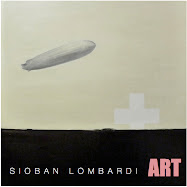
Sloan is another member of the cadre of girlfriends I began to introduce on May 12. Sloan is a dear friend and she is also my cousin, the fifth of my beloved Aunt Grace’s six daughters. Our mutual awareness seems to coincide with her family’s move from South Shore to the North Shore. I caught her wedding bouquet and it worked. (Or should I say, she handed me her wedding bouquet.) It still worked.
Sloan is beautiful, but it is an unusual beauty and always has been. So unusual in fact, that as a child, her siblings managed to convince both she and the neighbors that Sloan was an adopted Vietnamese war orphan. Her beauty attracts equally unusual admirers. There was that interesting chap than unzipped and placed a particular part of his anatomy on her shoulder on the 151. And I vaguely recall a story about the French TA she dated in college. I believe that relationship cooled when he showed up for a game of Squash wearing a Speedo.
Setting aside the funny anecdotes, Sloan’s beauty is surpassed only by her kindness and compassion. She freely embraces the deeply spiritual component of her character, spending time away from family and a successful career to teach catechism to the intellectually challenged.
I love to talk to Sloan about life, love, God, family, books and art; also fashion, food, Paris and Argentinean Polo players. We had the privilege of seeing Merce Cunningham dance in 1984. This event served to enhance the Cadre’s ritual of throwing offbeat dancing into the party mix at only a moment’s notice.
Together we invented the cheeseburger diet, sweater syndrome and a million other crazy notions. I am extremely lucky that I get to share the bonds of friendship and family with Sloan and I look forward to doing so well into our dotage.
Happy Birthday Darling! Just remember to leave your shoes near the front door so that my parents know you’re here.






